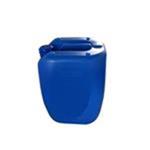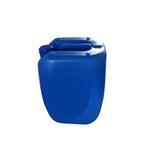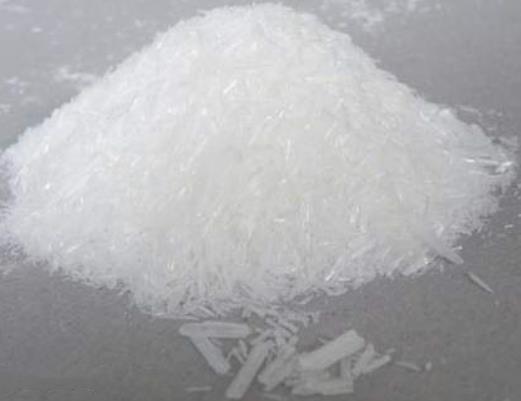2-Ethylhexanol: A Versatile Chemical Compound in Modern Industry
Jul 11,2024
Introduction
2-Ethylhexanol, often abbreviated as 2-EH, is an organic compound with the chemical formula C8H18O. As an important chemical intermediate, it finds widespread applications across various industries. This article delves into the properties, components, applications, and storage methods of 2-ethylhexanol.

Figure 1 Characteristics of 2-Ethylhexanol
Properties
2-Ethylhexanol is a branched, eight-carbon alcohol. Its molecular structure can be described as follows: it consists of a hexanol backbone with a two-carbon ethyl group attached to the second carbon atom. The compound has a molecular weight of 130.23 g/mol and a boiling point of approximately 184.6°C. Its density at 20°C is 0.833 g/cm³.
One of the notable characteristics of 2-Ethylhexanol is its relatively low volatility and high boiling point, making it suitable for use in high-temperature applications. It is a clear, colorless liquid with a mild, sweet odor, which is slightly soluble in water but highly soluble in organic solvents such as alcohols, ethers, and hydrocarbons.
Main Components
2-Ethylhexanol is synthesized primarily through the aldol condensation of n-butyraldehyde, followed by hydrogenation. The production process involves several steps:
Aldol Condensation: In this step, two molecules of n-butyraldehyde undergo aldol condensation to form 2-ethylhexenal.
Hydrogenation: The 2-ethylhexenal is then hydrogenated to produce 2-ethylhexanol.
The chemical purity of commercial 2-Ethylhexanol is generally very high, with minimal impurities. However, trace amounts of by-products from the synthesis process, such as n-butanol and octanol, can sometimes be present.
Applications
2-Ethylhexanol is a highly versatile chemical with numerous applications in different sectors:
Plasticizers
One of the primary uses of 2-ethylhexanol is in the production of plasticizers, which are added to plastics to increase their flexibility, workability, and durability. The most common plasticizer produced using 2-EH is di(2-ethylhexyl) phthalate (DEHP), widely used in PVC products such as cables, flooring, and medical devices.
Solvents
2-Ethylhexanol is also employed as a solvent in various applications due to its ability to dissolve a wide range of substances. It is used in coatings, inks, adhesives, and sealants. In the coatings industry, 2-EH acts as a coalescing agent, aiding in film formation and improving the appearance and durability of the coating.
Chemical Intermediate
2-Ethylhexanol serves as a chemical intermediate in the synthesis of various other compounds. It is a precursor to esters, such as 2-ethylhexyl acrylate and 2-ethylhexyl nitrate, which are used in adhesives, coatings, and fuel additives. Additionally, 2-EH is utilized in the production of surfactants, lubricants, and defoamers.
Fuel Additives
In the fuel industry, 2-ethylhexanol is used to produce 2-ethylhexyl nitrate, an important cetane improver for diesel fuels. This additive enhances the ignition quality of diesel, leading to better engine performance and reduced emissions.
Pharmaceuticals
The pharmaceutical industry also benefits from 2-ethylhexanol. It is used as an intermediate in the synthesis of active pharmaceutical ingredients (APIs) and excipients. Its solubility properties make it valuable in formulating drug delivery systems.
Storage Methods
Proper storage of 2-Ethylhexanol is crucial to maintain its quality and prevent any hazardous incidents. The following guidelines are recommended for the storage of 2-EH:
Temperature Control: 2-Ethylhexanol should be stored in a cool, well-ventilated area away from direct sunlight and sources of heat. The ideal storage temperature ranges between 10°C and 30°C.
Containers: They should be stored in tightly sealed containers made of materials compatible with alcohol, such as stainless steel, polyethylene, or Teflon-lined containers. Avoid using containers made of materials that can react with alcohol, like certain metals and plastics.
Ventilation: Ensure that the storage area is well-ventilated to prevent the accumulation of vapors, which can be flammable. Use explosion-proof ventilation systems if necessary.
Labeling: Clearly label all containers with the chemical name, concentration, and hazard warnings. Ensure that safety data sheets (SDS) are readily available in the storage area.
Spill Containment: Implement spill containment measures, such as secondary containment trays and absorbent materials, to manage any accidental releases of 2-EH.
![]() References
References
[1] Bahrmann H, Hahn H D, Mayer D, et al. 2-Ethylhexanol[J]. Ullmann’s Encyclopedia of Industrial Chemistry, 2013, 13: 1-6.
[2] Nalli S, Horn O J, Grochowalski A R, et al. Origin of 2-ethylhexanol as a VOC[J]. Environmental pollution, 2006, 140(1): 181-185.
- Related articles
- Related Qustion
- Application of 2-ethylhexanol Mar 28, 2022
2-Ethylhexanol is an organic compound with a molecular formula of C8H18O.
Benzocaine, a local anesthetic commonly used in medical and dental practices, has garnered significant attention in the chemistry and pharmaceutical industries.....
Jul 11,2024API4,5-Bis(diphenylphosphino)-9,9-dimethylxanthene's unique properties enhance catalytic processes and luminescent materials, promising advancements in optoelectronic devices.....
Jul 11,2024API2-Ethylhexanol
104-76-7You may like
- 2-Ethyl Hexanol
-

- $6.00 / 1kg
- 2024-10-18
- CAS:104-76-7
- Min. Order: 1kg
- Purity: 99%
- Supply Ability: 2000KG/Month
- 2-ETHYL-1-HEXANOL
-

- $350.00 / 170kg
- 2024-10-18
- CAS:104-76-7
- Min. Order: 5000kg
- Purity: 99.75%
- Supply Ability: 30 tons
- 2-Ethyl Hexanol
-

- $6.00 / 1KG
- 2024-10-18
- CAS:104-76-7
- Min. Order: 1KG
- Purity: More than 99%
- Supply Ability: 2000KG/MONTH






